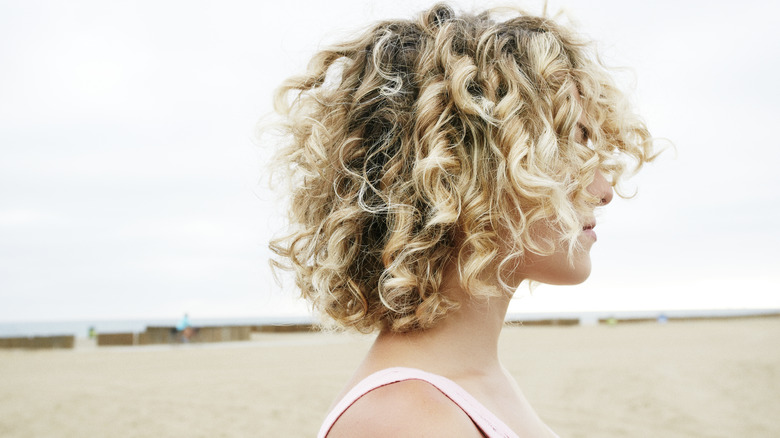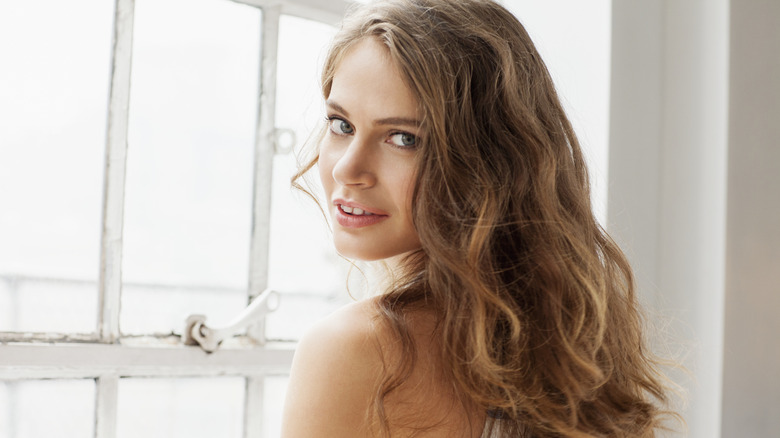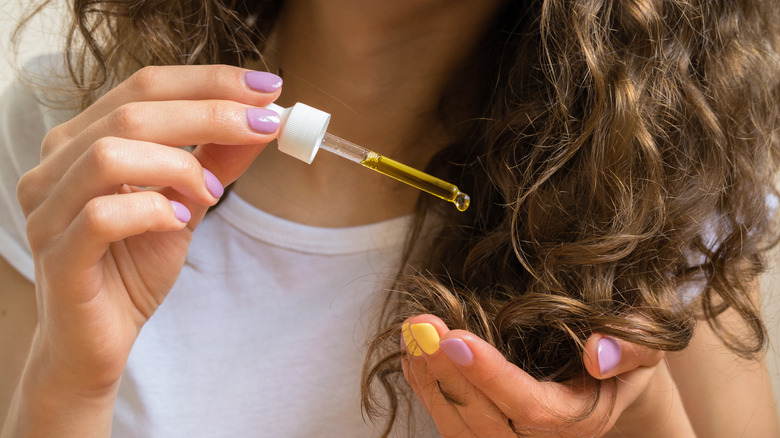Do You Have Curly Or Wavy Hair? Here's How To Find Out
Straight hair is pretty easy to distinguish, but things aren't so clear when we talk about curly hair. While we may define hair as being straight or curly, if there is anything that the last century of curly hair has taught us, it's that in the curls department, we have a few other factors to consider as well. For example, hair can be curly, wavy, or coily, and within these categories, the hair pattern can range from soft to tight.
So if your hair falls away from the straight spectrum, it likely belongs to any one of nine sub-categories (according to the most popular hair typing system developed by Andre Walker, there are three sub-categories for the larger categories of curly, wavy, and coily hair types, depending on curl pattern). Between the three larger categories, coily is usually easier to distinguish because of the very thick, tight, zig-zagged, spiral curls. However, if you are not sure whether your hair is curly or wavy, we've got you covered. Glam spoke exclusively to Angela C. Stevens, co-creator of Cantu protective styles by Angela, to help us tell them apart.
"Wavy hair is a looser texture than curly hair and usually looks straight for a few inches at the root before you begin to see texture," she explains. "Curly hair tends to come out of the cuticle in a round coil. It's easier to identify from the root. Curly hair strands typically make a full turn in an S or spiral pattern, whereas wavy hair naturally dries in a looser S pattern with no turns to the hair."
Identifying your curly or wavy hair sub-category
Now you can tell whether you have curly or wavy hair, but don't rest on your laurels yet! According to Andre Walker's hair typing system, type 1 is straight hair, type 2 is wavy, type 3 is curly, and type 4 is coily. Then each type is given a letter between A and C to denote the scale of softness to tightness. For example, if your hair begins straight at the roots but slightly twists at the ends, then you have 2A soft waves. Hair that starts straight but quickly turns into large S-shaped locks is classified as 2B wavy hair. On the other hand, hair that grows out into very pronounced waves is considered 2C deep waves. A similar classification follows for curly hair. 3A points to soft curls that make large twists, 3B hair features smaller springs, and 3C refers to even tighter, usually more defined curls, or ultra-curly hair.
Angela C. Stevens believes there are other factors to take into account when defining your hair type, too. "Other distinctions to include when describing texture are density, porosity, chemically treated vs. virgin hair," she tells Glam exclusively. "Curls and waves come in many different textures so it's important to be as descriptive as possible when discussing your hair." This is paramount when trying to find the right stylist for your curly hair. "For example saying, 'I have high porosity, shoulder-length, chemically treated, dense wavy hair," is a great way to describe your hair to a new hairdresser before getting started with a new hairstyle," Stevens confirms.
Should curly and wavy hair be treated the same way?
Since wavy and curly hair differs, it makes sense that they should need different haircare products. "Curly hair typically needs more of a combination of products layered on the hair or heavier products to define and hydrate the curls," Angela C. Stevens tells Glam exclusively. "Whereas wavy hair generally requires less product and lighter-weight products to help achieve the best texture."
Whether you are styling your naturally wavy hair or trying to tame your unruly curls, hydration is key. For example, avocado oil works wonders for silky smooth hair, so go the extra mile and experiment with essential oils in your haircare routine. Just remember to keep the products lighter if you have wavy hair rather than curls.
Additionally, as a rule of thumb, remember that the curlier the locks, the more prone they are to breakage and frizziness. To minimize breakage, use the right comb for your hair and a microfiber towel when drying it instead of a regular one. Silky pillowcases also reduce frizziness. Of course, you can always ask your hairstylist for advice to ensure that your hair remains lustrous and your curls or waves gorgeously defined.


